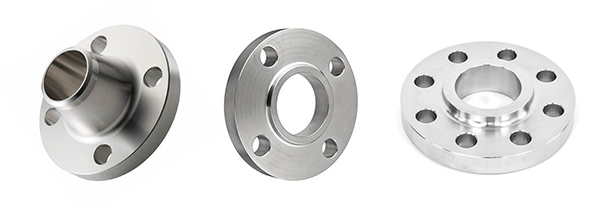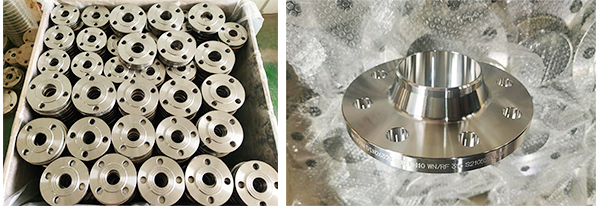- Gate valve
-
- DN1000 Extension stem double flange soft seal gate valveDIN F4 resilient seated gate valveDN450-1200 Resilient Seated Gate ValveDIN F5 resilient seated gate valveSocket connection soft seal gate valveUnderground cap soft seal gate valveBS5163 rising stem soft seal gate valveHard seal gate valveAPI slab Gate ValveStainless steel flange gate valveWafer knife gate valvePneumatic gate valveSoft seal gate valveExtension stem gate valveUL/FM fire protection groove ends gate valveRising stem forged steel gate valvecarbon steel gate valveStainless steel threaded gate valveDIN soft seal gate valveANSI soft sealing gate valve 200PSICast iron gate valveBS resilient seated gate valve
- Butterfly valve
-
- DN900 pneumatic triple eccentric hard seal butterfly valveD643H Triple Eccentric Butterfly ValveD343H Hard seal butterfly valveMulti standard EPDM seated butterfly valveSingle flange butterfly valveDN2000 Double eccentric butterfly valveFlange butterfly valveLug butterfly valveWafer butterfly valve with handleWorm gear operated butterfly valveWafer lined fluorine butterfly valveStainless steel wafer butterfly valveStainless steel flanged butterfly valveThree eccentric flange butterfly valvePneumatic flanged butterfly valvePneumatic wafer butterfly valveTriple eccentric butterfly valve wafer typeWafer butterfly valve ULC approvedInflatable seat butterfly valveHigh performance butterfly valveGrooved end butterfly valveElectric soft seal butterfly valveFlange fluorine lined butterfly valveHandle aluminum butterfly valveWorm Gear Aluminum Butterfly ValveFull PTFE lined butterfly valve wafer typeOne stem no-pin wafer butterfly valveMulti standard aluminum stem butterfly valveStainless Steel wafer Butterfly ValveAluminium handle operated lug butterfly valveLever Operated Flange Butterfly ValveButterfly valve stemButterfly valve discButterfly valve seat
- Ball valve
-
- DN1400 top-mounted eccentric semi-ball valveFlanged three-way ball valveFully welded ball valveNatural gas ball valveHigh platform flange ball valve1 PC ball valveFixed ball valvePTFE seat flanged ball valveMetal seat ball valveAPI 6D ball valve3 Piece ball valveFull Bore 3 way ball valve L-Port3 Way T-Port ball valve2PC Ball valve female thread stainless steel
- Globe Valve
-
- API Carbon Steel Globe ValveBellows Globe ValveStainless steel flange globe valveStainless steel thread S type globe valveStainless steel thread B type globe valveCast Steel Globe ValvePiston Globe ValveWCB Carbon Steel Globe Check Valveelectric motorized control stainless steel SS316 globe valveBrass Globe ValveCryogenic Globe valveHT200 Globe ValveThreaded Stainless Steel Globe ValveGG25 Globe ValveANSI API Cast Steel And Stainless Steel Globe valve
- Check valve
-
- Rubber seal check valveDN800 Slow closing check valveDN800 Rubber Disc Check ValveButterfly Buffering Check Valvecheck valve with counter weightSilent Check ValveWCB Swing check valveSwing Check ValveSingle Chip Check Valve H74WStainless Steel Wafer Check ValveSwing Start Check ValveFoot check valveAPI Swing Check ValveDIN Flange check valveSingle plate check valveLifting Check ValveBottom ValveHammer Diminish Noises Check ValveWafer Check ValveWafer dual plate check valve
- Control valve
-
- Static Balancing ValveCage Guided Sleeve Globe Control ValveDN1000 Piston Flow Regulating ValveDN1600 Electric Actuator Flow Regulating ValvePneumatic Flanged Butterfly ValvePneumatic Wafer Butterfly ValveAngle Seat ValvePneumatic gate valveElectric three-way control valveElectric sleeve control valve
- Water Meter
-
- Vertical Type Water MetersStainless steel threaded water meterPiston water meterPlastic water meterMore flow rotor dry water meterspiral vane flange water meterCI wotlman water meter with pulse outputLXCLG(R) Vertical removable element woltman cold (hot) water meterSingle flow rotor dry water meterPrepaid Token Water MeterElectromagnetic flowmeterRotary Piston Liquid Sealed Water MeterRotary Piston Liquid Sealed Water Meter
- Air valve
-
- Double ball exhaust valveDoubleair Air Valve SaudiDoubleair Air Valve Southeast AsiaDoubleair Air Valve South AmericaDouble Air ValveThreaded Air ValveSingle Air ValveTriple Functions Air ValveAutomatic Air Release ValveAutomatic release valveAutomatic exhaust valveComposite Exhaust Air ValveBrass exhaust valveDouble Ball Air Valve
- Pipe Repair & Coupling
-
- Flexible Multi-Function Pipe Coupling ZFJ-SSS Semi-Circle Pipe Repair Clamp SJW-HDuctile Iron Band Repair ClampStainless Steel Band Repair ClampDouble-Section Pipe Repair CouplingFolding Type Pipe RepairSingle-Section Multi-Function Pipe Coupling MF-SGear-Ring Type Multi-Function Pipe Coupling GR-SZBW Damping Corrugated Hose
- Dismantling Joint
-
- VSSJAFC(CC2F) Detachable Flange Transmission JointVSSJA-2(B2F) Double Flange Limited Expansion JointVSSJA-1(BF) Single Flange Limited Expansion JointVSSJA(AF) Flange Loose Expansion JointJGD-B Threaded Rubber JointZBW Damping Corrugated HoseKXT-S Flexible Dual-Spherical Rubber JointKXT Rubber Soft JointFlange Adaptor
What should be paid attention to when using stainless steel flanges?
What should be paid attention to when using stainless steel flanges?
Precautions before using stainless steel flanges
1. In order to prevent the corrosion between the eyes due to the heating of the flange cover, the welding current should not be too large, about 20% less than the carbon steel electrode, the arc should not be too long, the interlayer cooling is fast, and the narrow welding bead is better.
2. The electrode should be kept dry during use. The calcium-titanium type should be dried at 150°C for 1 hour, and the low-a hydrogen type should be dried at 200-250°C for 1 hour (do not repeat the drying multiple times, otherwise the coating will easily crack and peel) to prevent The electrode coating sticks to oil and other dirt, so as not to increase the carbon content of the weld and affect the quality of the weldment.
3. When stainless steel flange pipe fittings are welded, carbides are precipitated after repeated heating, which reduces corrosion resistance and mechanical properties.
4. Chromium stainless steel flange pipe fittings have larger hardenability American standard flanges after welding, which is prone to cracks. If the same type of chromium stainless steel electrode (G202, G207) is used for welding, preheating above 300°C and slow cooling treatment at about 700°C after welding must be carried out. If the weldment cannot be subjected to post-weld heat treatment, stainless steel flange pipe welding rods (A107, A207) should be used.
5. For stainless steel flanges, appropriate amount of stability elements Ti, Nb, Mo, etc. are added to improve corrosion resistance and weldability. The weldability is better than that of chrome stainless steel flanges. When using the same type of chromium stainless steel flange electrode (G302, G307), it should be preheated above 200℃ and tempered at about 800℃ after welding. If the weldment cannot be heat treated, stainless steel flange pipe welding rods (A107, A207) should be used.
6. Stainless steel flange pipe fittings and butt welding flange electrodes have good corrosion resistance and oxidation resistance, and are widely used in chemical, fertilizer, petroleum, and medical machinery manufacturing.
What is a flange?
Flange, also known as flange flange or flange. Flanges are the interconnected parts between shafts and are used for the connection between pipe ends; they are also used as flanges on the inlet and outlet of equipment for the connection between two equipment, such as reducer flanges. Flange connection or flange joint refers to a detachable connection in which flanges, gaskets and bolts are connected to each other as a set of combined sealing structures. Pipe flange refers to the flange used for piping in the pipeline installation, and used on equipment refers to the inlet and outlet flanges of the equipment. There are holes on the flanges, and bolts make the two flanges tightly connected. The flanges are sealed with gaskets. Flange is divided into threaded connection (thread connection) flange, welding flange and clip flange. Flanges are used in pairs, wire flanges can be used for low-pressure pipelines, and welded flanges can be used for pressures above four kilograms.
What are the commonly used flange materials?
WCB, LCB, CF8M (316), CF8C (347), CF8 (304), CF3 (304L), CF3M (316L), etc.;
What are the common flange connection methods?
According to the connection method, the flange connection type can be divided into: plate flat welding flange, flat welding flange with neck, butt welding flange with neck, socket welding flange, threaded flange, flange cover, butt welding ring with neck Loose flanges, flat welding ring loose flanges, ring groove face flanges and flange covers, large diameter flat flanges, large diameter high neck flanges, eight-character blind plates, butt welding ring loose flanges, etc;









